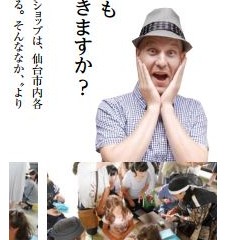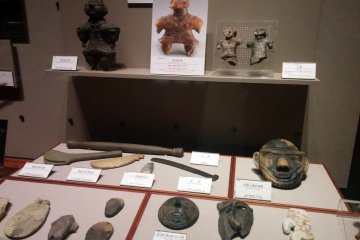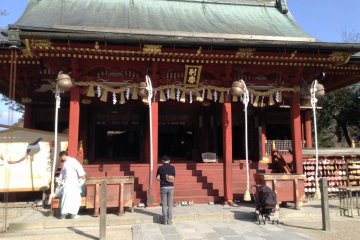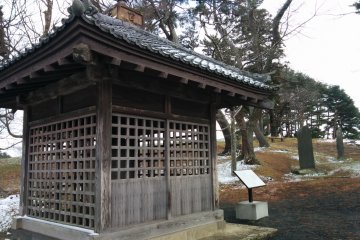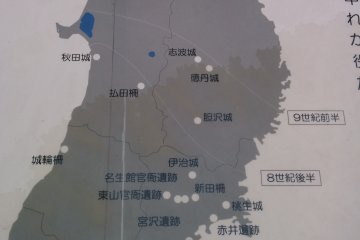Castle sightseeing is one unique tourism option Japan offers nationwide. While Taga Castle in Tagajo City, Miyagi Prefecture can't compete with the breathtaking views some reconstructed castles offer, it has just as much or more history.
Taga Castle was constructed in 724 by a man named Ohno no Azumabito. It was the early Nara period and the imperial court in Japan ordered conquests to conquer the native Emishi people living in the north in order to expand their own territory. Part defensive castle and part administrative center, Taga Castle saw centuries of action. It was attacked in a rebellion and burned to the ground, heavily damaged by an ancient tsunami, and functioned as a capital city of the entire northern region long after its fighting days. The castle and location became less important with the construction of the "Kyoto of the East" known as Hiraizumi and the Edo period development of Sendai by the samurai lord Date Masamune.
Today the castle ruins can be visited with a stroll around the historic park. There are no reconstructed buildings on site, just traces of stairs, layouts of where offices and military quarters once stood, a portion of a Heian era roadway, and signs of the two miles of earthen walls which encased the capital. This place is big. To see every nook and cranny could take two to three hours. At each location is a sign detailing in Japanese and simple English what you are looking at or what once was there. Pictures of how the gates, government office, and guard towers help you imagine what the castle may have looked like over a millennium ago. To see some of the artifacts discovered at the site, head to the nearby Tohoku History Museum.
When walking around you'll feel the impermanence of Taga Castle's legacy. A stone tablet known as Tsubo no Ishibumi (壺の碑) was erected in the year 762 to remember the site of the castle. It can still be seen today. It is one of the three oldest historical markers in Japan. Iconic haiku master Matsuo Basho was said to be brought to tears upon realizing the significance the stone represented. He promptly recorded the event in his future masterpiece: A Narrow Road to the Deep North.
From JR Sendai Station, The Taga Castle remains can be accessed via a 15 minute train ride to Kokufutagajo Station then a 25 minute walk to the site. Otherwise, parking is available if coming by car. Admission and parking are free. During certain times of the year a free guide service in Japanese is available but only with advanced reservations through the local tourism board. More pictures of the castle remains in the accompanying photo story here.


